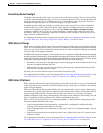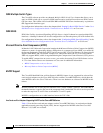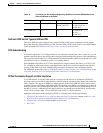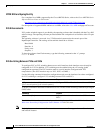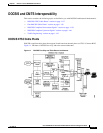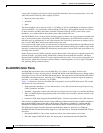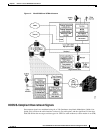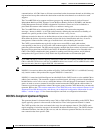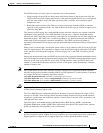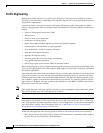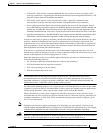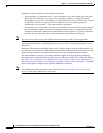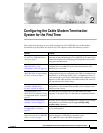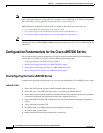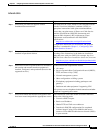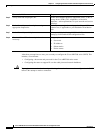
1-141
Cisco uBR7200 Series Universal Broadband Router Software Configuration Guide
OL-2239-05
Chapter1 Overview of Cisco uBR7200 Series Software
DOCSIS and CMTS Interoperability
The CMTS allocates two basic types of contention slots on the upstream:
• Initial ranging slots that CMs use during their initialization phase to join the network. Once the
CMTS receives an initial ranging request from a cable modem using this kind of slot, it subsequently
polls the cable modem, along with other operational CMs, in unicast, non-contention station
maintenance slots.
• Bandwidth-request minislots that CMs use to request data grants from the CMTS to send data
upstream in non-contention mode. Any cable modem can use this type of minislot to request a data
grant from the CMTS.
The stream of initial ranging slots and bandwidth request minislots comprise two separate contention
subchannels on the upstream. Cisco uBR7200 Series software uses a “dynamic bandwidth-request
minislots-per-MAP” algorithm to dynamically control the rate of contention slots for initial ranging and
bandwidth-requests. The CMTS uses a common algorithm to vary backoff parameters that CMs use
within each of the two upstream contention subchannels. The CMTS uses these algorithms to
dynamically determine the initial ranging slots and bandwidth-request minislots to allocate on the slotted
upstream.
When power is restored after a catastrophic power failure, a large number of CMs will want to join the
network simultaneously. This represents an impulse load on the initial ranging subchannel. The CMTS
in this situation will increase the frequency of initial ranging slots so that CMs can quickly join the
network.
During high upstream data loads, the CMTS conserves the scarce upstream channel bandwidth resource
and is more frugal in introducing upstream initial ranging slots. The CMTS schedules bandwidth-request
minislots at low loads to provide low access delay. At high upstream loads, the CMTS reduces the
number of contention-based request minislots in favor of data grants, while maintaining a minimum
number of request slots.
Note The system default is to have the automatic dynamic ranging interval algorithm enabled, automatic
dynamic ranging backoff enabled, and data backoffs for each upstream on a cable interface. Commands
to configure the dynamic contention algorithms include:
[no] cable insertion-interval [automatic [<Imin [Imax]>] in msecs
[no] cable upstream <port number> range backoff [automatic] | [<start> <end>]
[no] cable upstream <port number> data-backoff [automatic] | [<start> <end>]
Caution In general, Cisco discourages adjusting default settings. Only personnel who have received the necessary
training should attempt to adjust values.
The CiscouBR7200series equipment periodically broadcasts Upstream Channel Descriptor (UCD)
messages to all CMs. These messages define upstream channel characteristics that include upstream
frequencies, symbol rates and modulation schemes, Forward Error Correction (FEC) parameters, and
other physical layer values.
Upstream signals are demodulated using Quadrature Phase Shift Keying (QPSK) or Quadrature
Amplitude Modulation (QAM). QPSK carries information in the phase of the signal carrier, whereas
QAM uses both phase and amplitude to carry information.
Tip If your cable plant is susceptible to ingress or noise, QPSK is recommended based on the importance of
the data. Frequencies below 20 MHz are more susceptible to noise and might require lower symbol rates.
Higher frequencies might be able to support higher rates and use QAM modulation instead.



